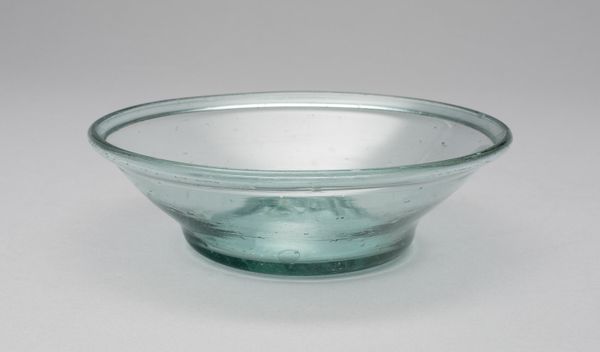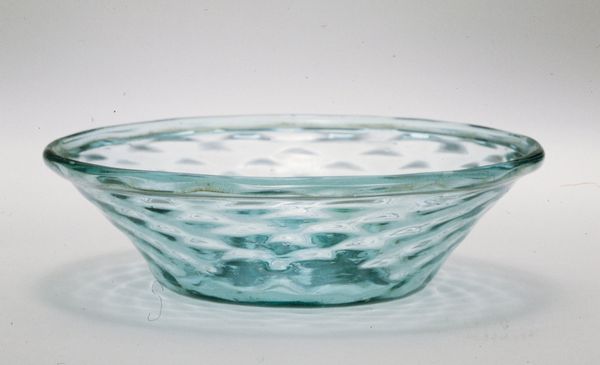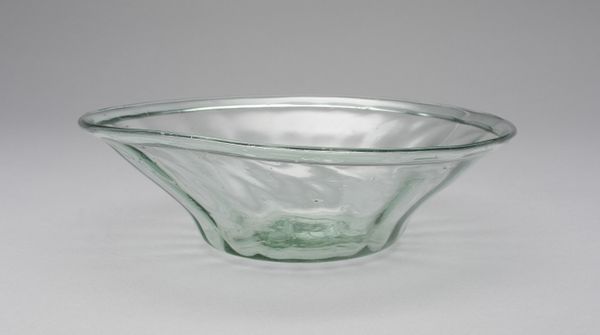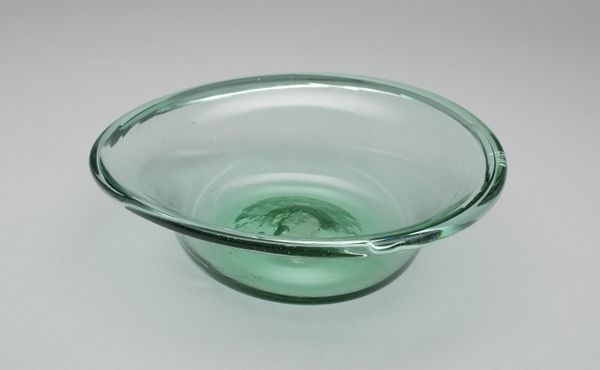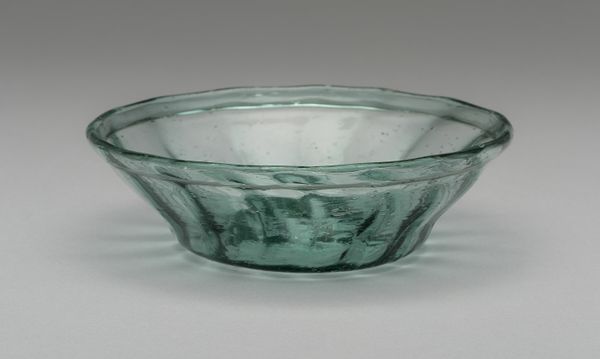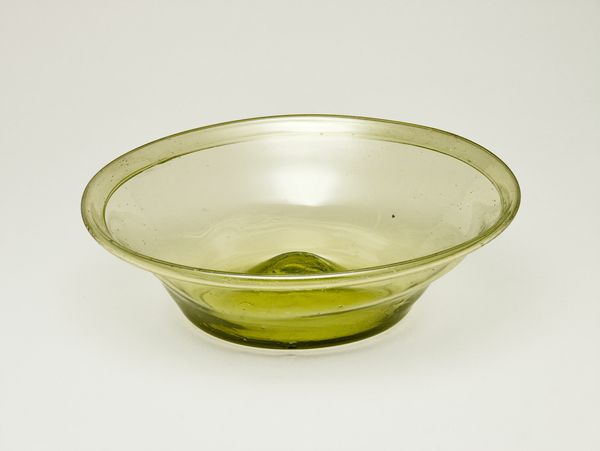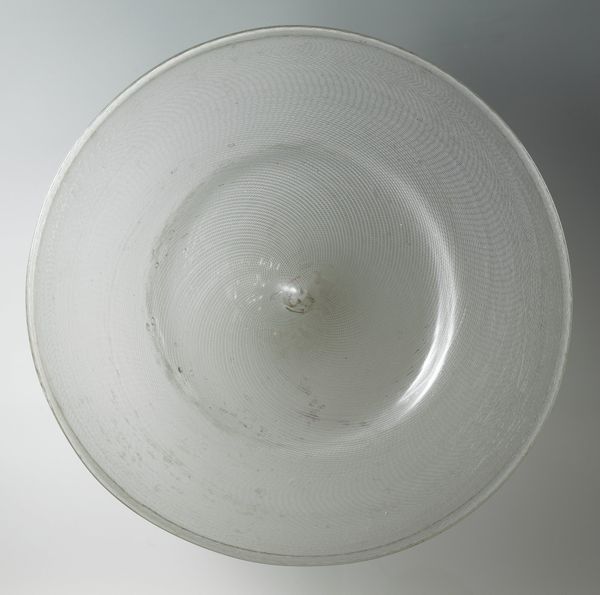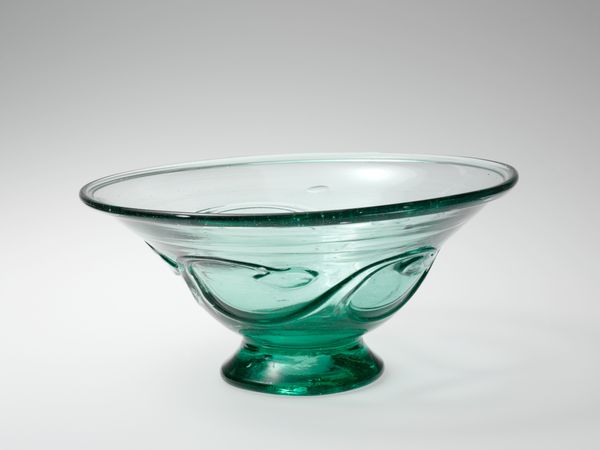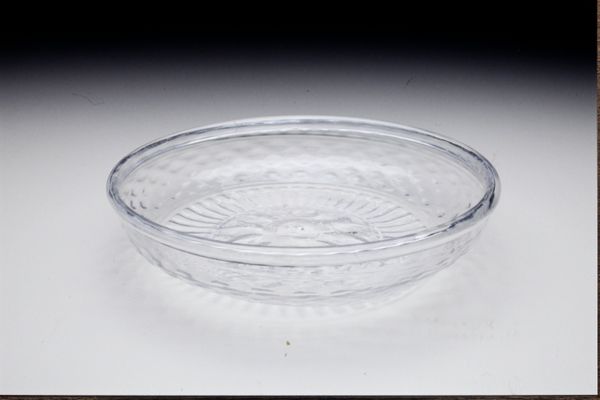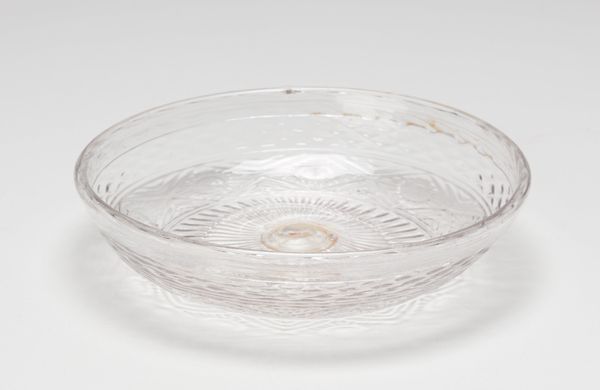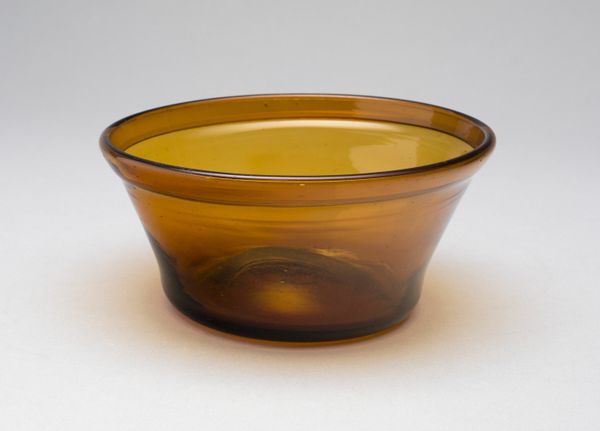
glass
#
glass
Dimensions: 4 1/2 x 8 5/8 x 8 5/8 in. (11.43 x 21.91 x 21.91 cm)
Copyright: Public Domain
Curator: This unassuming object, known simply as "Milk Pan," dates from the 18th to 19th century. You can find it here at the Minneapolis Institute of Art. Notice anything about the color, maybe even its…glow? Editor: Yes, that subtle blue-green hue is quite striking. It almost has an ethereal quality despite being such a functional object. It makes me consider the day-to-day life of those who made use of such items. Curator: Indeed. It is constructed entirely from glass and that informs a lot of my understanding about it. Its simple form underscores the importance of glass as an affordable, utilitarian material in the everyday lives of common folk at that time. There’s a story of technological innovation here too. Editor: Absolutely. Examining a commonplace object like this, within the context of the burgeoning glass industry of the time, raises questions about social access to manufactured goods. Was a simple milk pan truly available to anyone who wanted or needed one? Where would it have been acquired? Were milk products commonly available? So many questions about social infrastructure and diet are raised by something seemingly as plain as a pale blue bowl. Curator: Right, and there's also an inherent tension between the inherent fragility of the glass and its function as a durable household item for daily labor, for production. I find that contrast intriguing, almost a statement about labor versus commodity. Editor: That’s a powerful thought. The choice of material reflects and is reflected in a hierarchy that extends through gender and economics. Consider how easily such an item breaks, too: the socio-economic impact on the family that relied on the milk held within that now-shattered container! Curator: It serves as a lens – quite literally – through which we can consider societal shifts. And, of course, shifts in our aesthetic sensibility when even the quotidian becomes something worthy of preservation and attention. Editor: Yes, and by taking care to preserve this object for generations we have deemed its purpose as utilitarian more into something beautiful. That this act gives dignity to those who use similar items to sustain a basic element in their diet: food. It allows a sense of honoring to enter a museum institution. Curator: I'll never look at a humble glass bowl the same way again. Editor: And I now realize there's hidden beauty in the everyday item of working folk.
Comments
No comments
Be the first to comment and join the conversation on the ultimate creative platform.
